Historic Centre of Évora
By Marga
What is the Historic Centre of Évora?
Did you know the Portugal has many historical sites? The Historic Centre of Évora is a place where you dive thousands of years back in time.
Évora bloomed after the 1755 earthquake, and the Portuguese golden age left its marks on the city. But people have lived here for thousands of years. Outside the city, you can even find many megalithic sites in the stunning landscape of Alentejo.
Disclosure: This article contains affiliate links. Making a purchase through an affiliate link will mean a small commission for this website. This will not affect your price.
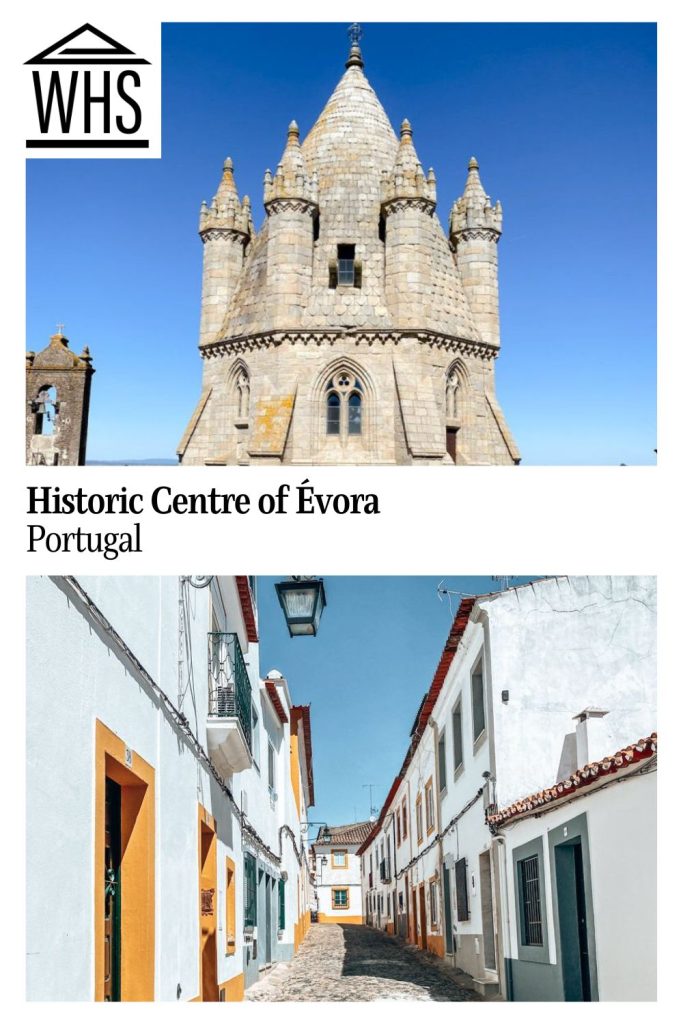
The museum city has roots that go back to Roman times, and the Temple of Diana is the oldest highlight in the city and one of the most important sights in the country. Other amazing spots in this area are the richly-decorated church Igreja dos Lóios and the Cadaval Palace.
But there are also numerous structures from medieval times and Moorish occupation. An excellent example is the Cathedral, where you can climb the roof of the building. It was a personal highlight for me as the views from the top were simply fantastic!
After your visit to Sé de Évora, you can start exploring the many cobblestoned streets in Évora. You’ll end up at the heart of the city, at Praça do Giraldo. It’s a great spot for lunch, and the square has a rich history. Évora is also a university town, and Évora University was, after Coimbra, the second established university in Portugal.
One of the most macabre sights in Évora is the Chapel of Bones. I thought it would be eerie, but I actually loved it! The interior of the chapel is fully covered with bones and skulls from monks. The beautiful frescos are also worth noticing, and they tell biblical stories.
Around Évora, you’ll notice another highlight of importance: the city walls. They’ve been a classified monument since 1920, and parts have been preserved. Discover the Porta Velha da Lagoa and the ancient aqueduct when following the route along the walls.
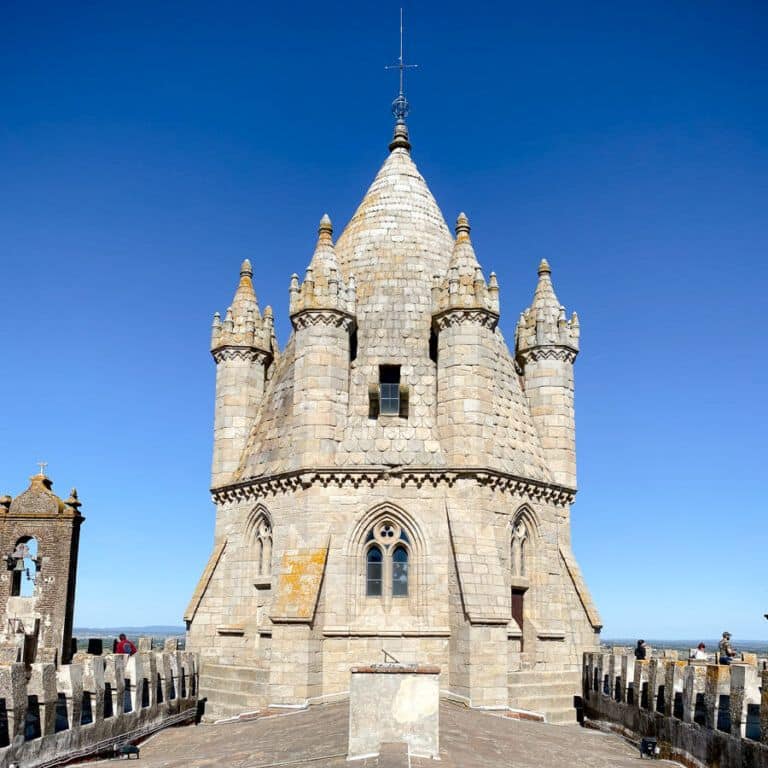
Why is Évora a UNESCO World Heritage site?
Due to its long history and well-preserved historical monuments, Évora has been a UNESCO World Heritage site since 1986. Évora is a museum city with multiple highlights in one place. It is a fine example of a golden age city in Portugal from after the earthquake. It is also a great place to see how Portuguese architecture influenced Brazilian architecture. Salvador de Bahía in Brazil, also a UNESCO site, is an example of this influence.
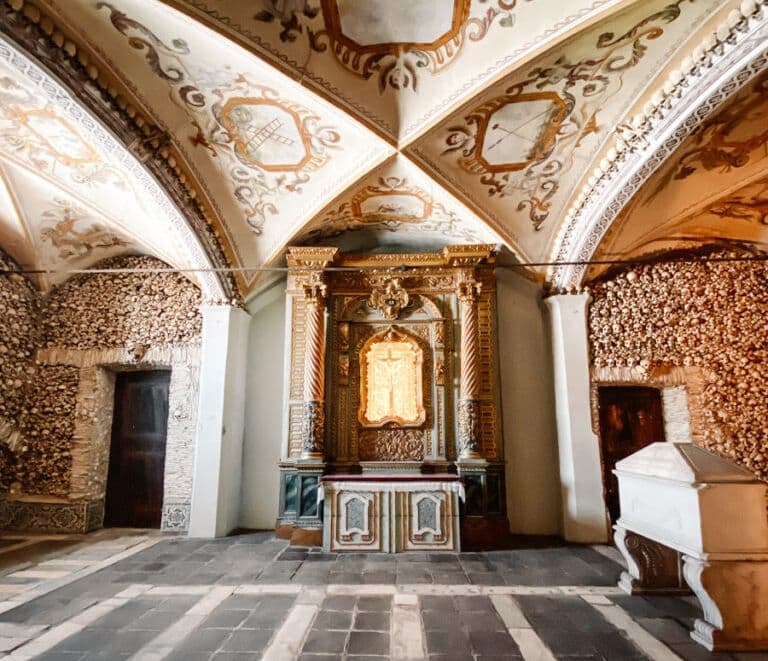
What can you expect on a visit to Évora?
You’ll need at least a day to make the most of your visit to Évora. There are many places to discover, and the city has a relaxing atmosphere. If you want to avoid busy tourist cities, you might even want to stay here for a few nights to soak in all its glory! I love the city, especially at night, as there are some fabulous restaurants and it’s super quiet. You can even stay in a lovely farmhouse around Évora!
Find hotels in or near Évora by clicking and zooming in on the map below:
When you visit Évora on a day trip from Lisbon or the Algarve, you can expect a busy day with lots of walking. The city centre is, however, small, and you’ll reach most sights within 10-minute walks from each other. Many places are free to visit, such as the Church of São Francisco and the Roman Temple.
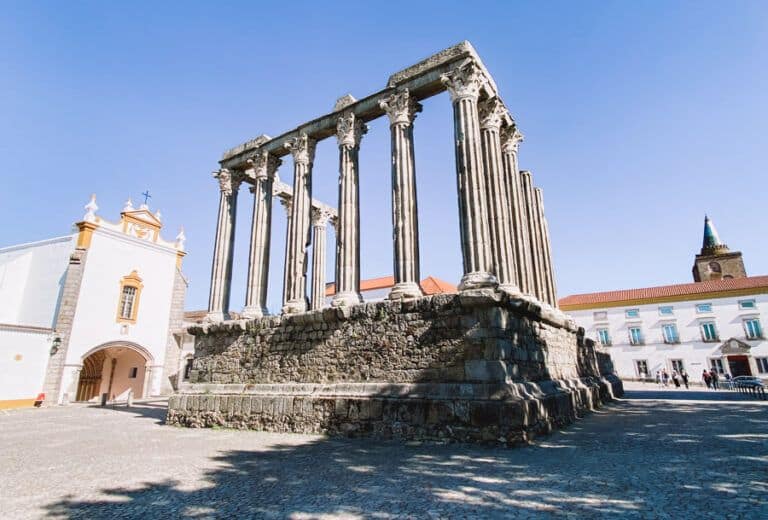
Is the Historic Centre of Évora worth visiting?
If you like quaint towns and history, then absolutely yes! But there is more to see in Évora. The city is located in Alentejo, a region known for its wine and cork. So why not combine a trip to Évora with a wine tasting, a guided tour in a cork forest, or a trip to the ancient megaliths?
What sorts of travellers would like the Historic Centre of Évora?
Évora is much loved by those who enjoy museum visits, history and good wines. Although the roof at the Cathedral has attracted some Instagrammers over the years, the city is pretty quiet overall.
If you travel with children, they would undoubtedly like a visit to the megaliths, as you can literally role-play like Asterix and Obelix between the stones. There is also a small playground in the garden, Jardim Público de Évora.
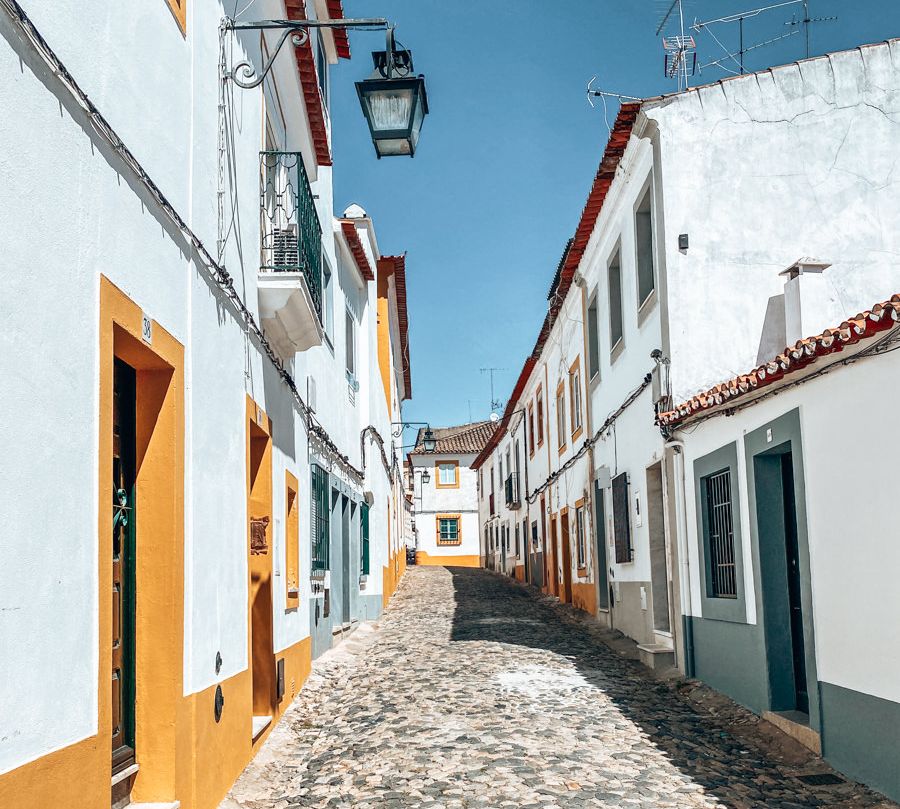
Tips for visiting Évora.
There is no need to prebook any entrances when visiting Évora. As a matter of fact, most monuments that charge entrance fees don’t have an online booking system. If you want to join an excursion to Évora, booking this well in advance is best to avoid disappointment. Click on the images below for lots of excursions to choose from:
Where is the Historic Centre of Évora?
As the name suggests, Évora is the name of the town. The city is situated in the Portuguese Alentejo region, known for its vast landscapes. You can reach Évora by bus and train, but I usually advise tourists to travel by guided tour or car.
Compare rental car prices here.
With a tour guide, you’ll hear all the ins and outs of the historic centre. Besides, they often stop at the megaliths, too, and even visit a vineyard. It takes less than two hours from Lisbon to reach Évora, and you’ll have the freedom to stop in a few locations along the way.
For more information about the Historic Centre of Évora, its opening hours and admission fees, see the Visit Evora website.
Have you been to Évora? If so, do you have any additional information or advice about this UNESCO World Heritage site? Please add your comments below!

